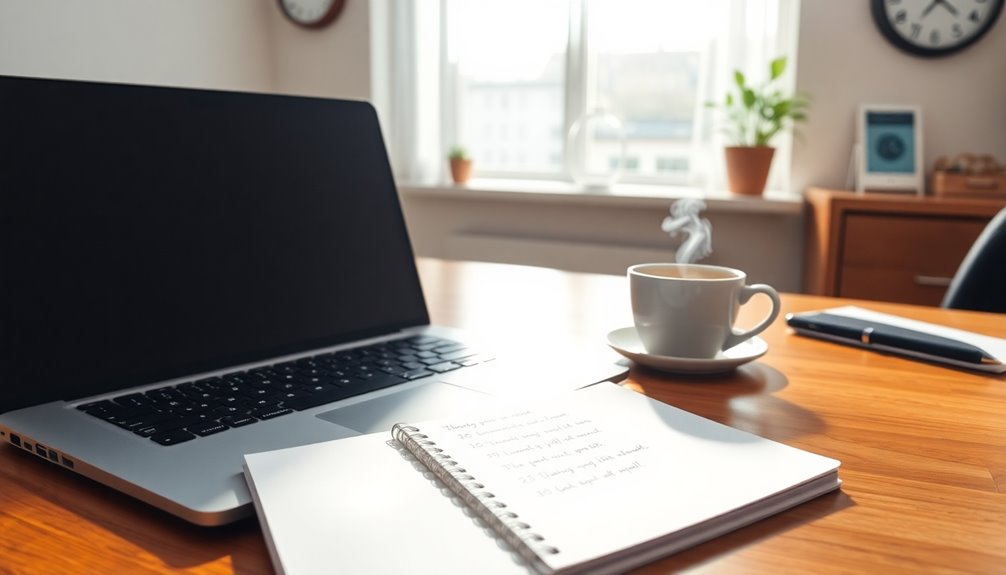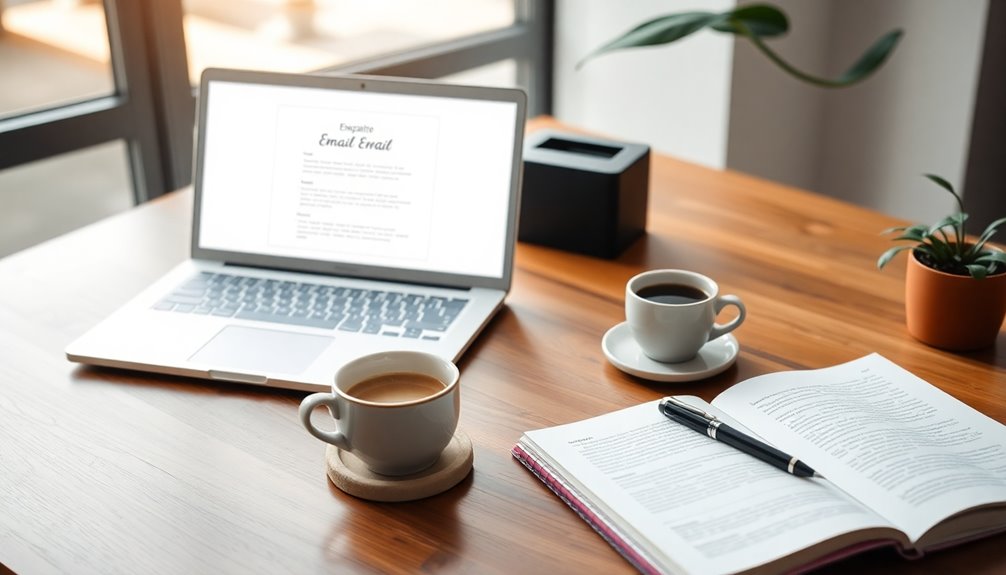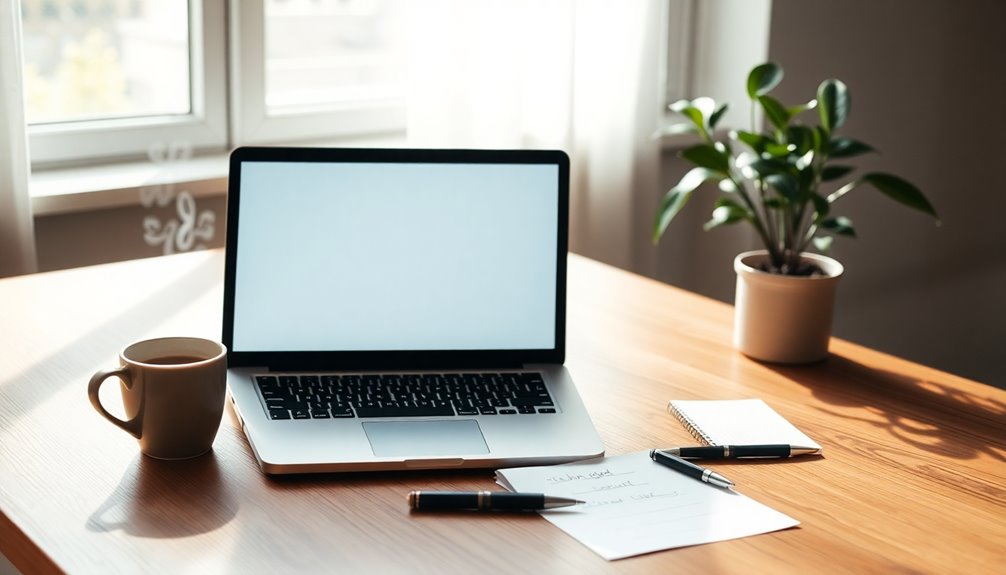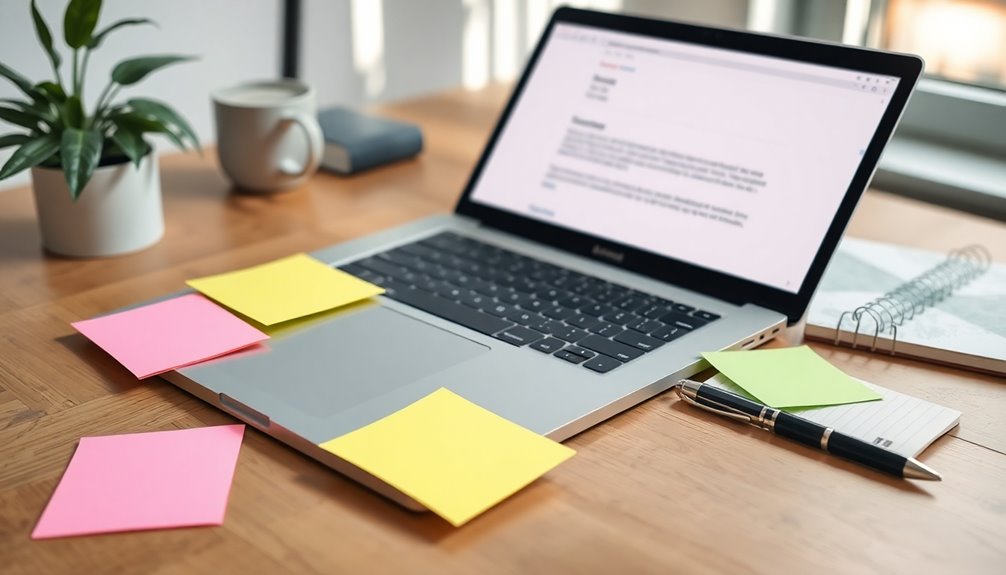To write a clear and effective out-of-office email, start with a polite greeting. Clearly state your absence duration, expected return date, and provide a brief reason for your unavailability. Include alternative contact information for urgent matters, ensuring your message is concise and jargon-free. Use a straightforward subject line like "Out of Office – [Your Name], [Return Date]." Avoid promising immediate responses upon your return and don't share excessive personal details. Regularly updating your message is key. This approach not only manages expectations but maintains professionalism, and there's even more you can explore to enhance your email effectiveness.
Key Takeaways
- Start with a polite greeting and clearly state your absence duration and expected return date.
- Provide a brief reason for your unavailability and include alternative contact information for urgent matters.
- Use a clear subject line like "Out of Office: [Your Name] until [Return Date]."
- Keep the message concise and professional, avoiding excessive personal details or jargon.
- Regularly update your out-of-office message to reflect any changes in your availability or contact information.
Introduction

When you're away from the office, a well-crafted out-of-office email can make a big difference in how your communication is perceived. This automated response informs senders of your unavailability and helps manage expectations regarding when they might hear back from you. A clear and concise message is essential, so keep it professional and to the point.
Your out-of-office email should include key components to be effective. Start by stating your duration of absence and provide a brief reason for your unavailability. This context helps recipients understand your situation better.
Don't forget to include a return date, as it allows senders to know when they can expect a response. Additionally, offering alternative contact information for urgent matters is crucial. This ensures that important issues can still be addressed in your absence.
Remember, proofreading your message before activation is vital to eliminate any typos. A polished out-of-office email reflects positively on your professionalism and business communication.
Maintains Professional Communication Standards

Maintaining professional communication standards in your out-of-office email is essential for fostering trust and respect.
Start your out-of-office message with a polite greeting and clearly state your absence along with your expected return date. This sets the right tone for communication.
Ensure you maintain a professional tone throughout the message. Avoid overly casual language, as clarity reflects accountability and respect in business communication.
Including a brief reason for your absence can help manage expectations, but avoid sharing excessive personal details that may compromise your privacy.
It's also critical to provide contact details for a designated point of contact for urgent assistance.
This allows for continuity in communication and ensures that important issues are addressed promptly while you're away.
Clear and Informative Subject Line

A clear and informative subject line sets the stage for your out-of-office email, making it immediately recognizable to recipients.
Start with "Out of Office," followed by your name and return date. For example, "Out of Office: John Doe Returns October 5." This format creates a clear subject line that communicates your unavailability with effective communication.
Including specific dates in the subject line helps recipients understand the timeframe of your absence right away.
A concise subject line, ideally under 50 characters, enhances readability and ensures it's fully visible in inbox previews. This approach keeps your out-of-office message easily identifiable among other emails.
Crafting Your Out-of-Office Message

Creating an effective out-of-office message is essential for clear communication while you're away. Start with a polite greeting, like "Thank you for your message," to set a friendly tone.
Clearly state your absence dates, so recipients know when to expect a response. If appropriate, include a brief reason for your absence, but keep it professional and avoid sharing excessive personal details. This adds a personal touch without compromising professionalism.
Next, designate an alternative contact for urgent matters. Provide their name, email, and phone number to ensure timely assistance during your absence.
Aim for a concise message that eliminates jargon, ensuring clarity and professionalism. Your out-of-office message should be straightforward, so recipients understand your situation without confusion. Additionally, consider incorporating an advance directive to ensure your wishes are known in case of an emergency during your absence.
Dos and Don'ts for Clarity

When crafting your out-of-office email, keep in mind the crucial dos and don'ts that ensure clarity.
First, do include a clear subject line, like "Out of Office: [Your Name] until [Return Date]." This immediately informs senders of your unavailability. You should also specify the exact dates of your absence, which helps manage expectations regarding when you'll respond to your email.
Next, do offer alternative contacts for urgent matters. This way, important issues can be addressed promptly in your absence. Maintain a professional tone throughout your message to ensure it reflects well on you.
On the flip side, don't provide excessive personal details about your absence; keep the focus on your availability and necessary contacts.
Also, don't promise immediate responses upon your return. Instead, indicate that you'll respond as soon as possible after your return to avoid setting unrealistic expectations.
Examples of Vacation Messages

Crafting a vacation message that effectively communicates your absence can make a significant difference in managing expectations. Here are a few examples that you can use or adapt for your out-of-office messages.
- "Thank you for your message! I'll be out of the office from [start date] to [end date] with limited email access. Responses may be delayed, but I'll get back to you upon my return. For urgent matters, please contact [Name] at [Email/Phone]. I appreciate your understanding! Maintaining strong communication skills is essential, even when you're away."
- "Hello! I'm currently on vacation from [start date] to [end date]. I'll have limited access to email, so responses may be delayed. If you need immediate assistance, please reach out to [Name] at [Email/Phone]. I look forward to connecting after my trip!"
- "Hi there! I'm out of the office enjoying some time off from [start date] to [end date]. While I'll do my best to check emails, responses may be delayed. For urgent matters, please contact [Name] at [Email/Phone]. Thank you for your patience, and I can't wait to catch up when I return!"
These vacation messages maintain a professional tone while adding personal touches to enhance engagement.
Pro Tips for Writing Effective Emails

Effective email communication requires attention to detail and a clear structure. When crafting your out-of-office email, start with a clear and concise subject line, like "Out of Office: [Your Name] Returns [Date]." This sets the tone and informs recipients of your absence right away.
Begin your email with a polite greeting and briefly explain your absence, including specific dates and a reason if appropriate. This transparency helps maintain professionalism.
Don't forget to provide alternative contact information for urgent matters. Include the name, email, and phone number of a colleague who can assist during your absence. This way, you ensure that urgent issues are addressed promptly, even in your absence.
Throughout your message, maintain a professional tone. Avoid overly casual language or excessive personal details, as they can detract from your professional image.
Lastly, proofread your email before activating your automated response. This step ensures clarity and eliminates any typos that could undermine your professionalism.
Final Thoughts
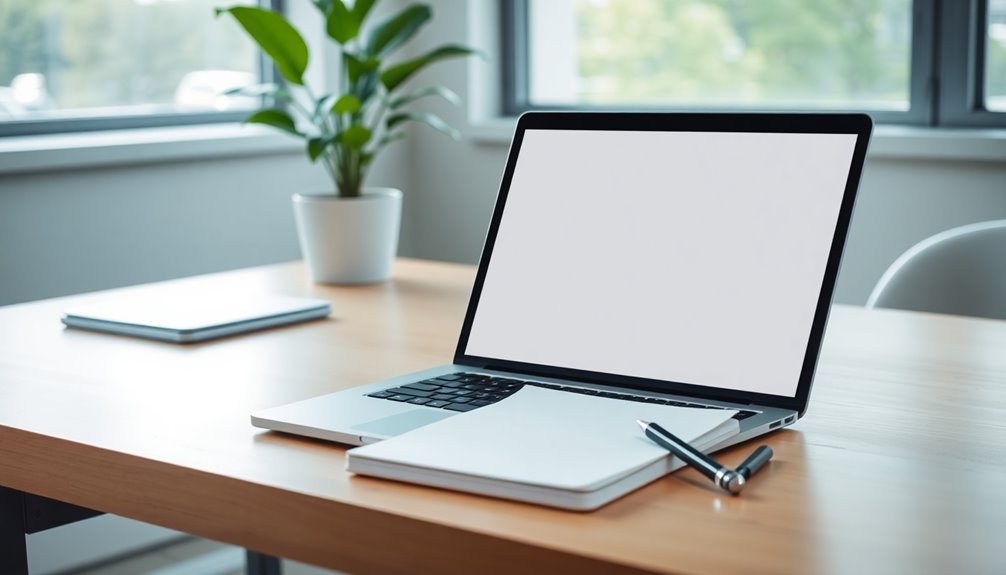
As you prepare to set your out-of-office email, remember that clarity and professionalism are key. An effective out-of-office message should include essential absence details like the dates you'll be away and a clear return date. This helps manage expectations and informs senders when they can expect a response.
Incorporate a concise message that outlines your reason for absence and highlights any limited access to emails. Maintaining a professional tone is crucial; avoid casual language and unnecessary personal details.
Don't forget to provide an alternative contact for urgent matters, including their email and phone number. This ensures that urgent issues are addressed promptly, even in your absence.
Regularly updating and testing your out-of-office messages is essential to ensure they reflect your current status accurately. If your expected response time changes or if you have any new contacts, make those updates immediately.
Frequently Asked Questions
How Do You Write a Clear Effective Email?
To write a clear, effective email, start with a polite greeting to engage your reader.
Clearly state your main point early on, and keep your language simple and concise.
Use short paragraphs for easy reading and avoid jargon that might confuse your audience.
If necessary, break down complex ideas into bullet points.
How Do You Write a Professional Out of Office Email?
To write a professional out of office email, start with a polite greeting.
Clearly state your absence, including specific dates, so the sender knows when to expect a response.
Briefly explain your reason for being away, but keep it professional.
Include an alternative contact for urgent matters, ensuring you have their consent.
Use a simple structure for clarity, and conclude with a formal sign-off and your email signature.
What Is the Most Professional Out of Office Message?
The most professional out-of-office message includes a polite greeting, clearly states your absence with specific dates, and offers a brief reason for your unavailability.
You should provide an alternative contact for urgent matters to ensure timely assistance.
Maintain a formal yet friendly tone throughout, and conclude with a courteous sign-off, like "Thank you for your understanding."
This approach shows respect for your sender and keeps communication professional while you're away.
What Is a Good Message for Auto Reply?
A good auto-reply message should be concise and informative.
Start with a polite greeting, then mention your absence and return date, like "I'm currently out of the office and will return on [date]."
Include alternative contact details for urgent matters, such as "For immediate assistance, reach out to [Name] at [Email]."
Lastly, thank them for their understanding and sign off professionally to maintain a respectful tone.
